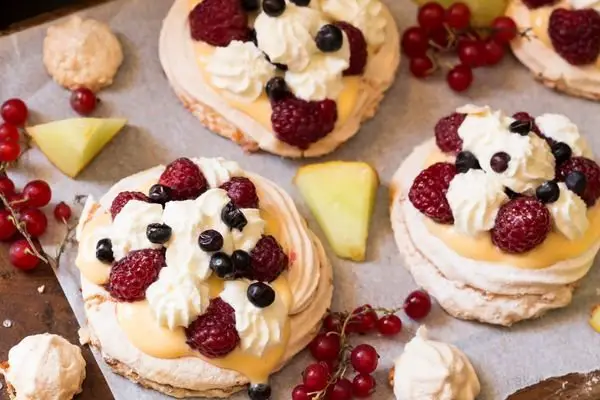What could be better than a light and fluffy dessert that melts in your mouth? Enter Pavlova Cake, a delicious meringue-based dessert that is as beautiful as it is tasty.
Named after the legendary Russian ballerina, Anna Pavlova, this dessert is a true delight. But where did it come from? Join us as we explore the history of Pavlova Cake and the tale behind this iconic dessert.

The Origins of Pavlova Cake
Pavlova Cake has been the source of many arguments over the years, with both Australia and New Zealand claiming it as their national dessert. However, the true origin of this delicate dessert is still a mystery. The first Pavlova Cake recipe is said to have originated in New Zealand in the early 1920s, while others believe it was first created in Australia around the same time.
The Legend of Anna Pavlova
Anna Pavlova was a Russian ballerina who gained worldwide fame in the early 1900s. Her graceful movements and ethereal beauty captured the hearts of audiences all over the world, and she became a household name. During one of her tours to Australia and New Zealand in the 1920s, it is said that a chef created the Pavlova Cake in her honor, inspired by her tutu-like appearance.
The Ingredients of Pavlova Cake
Pavlova Cake is a delicate dessert made from a meringue base that is crispy on the outside and soft and chewy on the inside. It is typically topped with whipped cream and fresh fruit, such as strawberries, kiwis, and passion fruit. The key to a perfect Pavlova Cake is to use the freshest ingredients possible and to beat the egg whites until they are stiff.
The Popularity of Pavlova Cake
Despite the controversy surrounding its origins, Pavlova Cake has become a favorite dessert worldwide. Its light and fluffy texture, combined with the sweet and tangy flavor of fresh fruit, makes it a perfect summer treat. It is a staple dessert at special occasions, such as weddings and birthdays, and is also a popular choice for afternoon tea.
FAQs
While making Pavlova Cake requires some skill and attention to detail, it is not overly difficult. The key is to beat the egg whites until they are stiff and to bake the meringue slowly at a low temperature.
Absolutely! While strawberries, kiwis, and passion fruit are popular choices, you can use any type of fresh fruit you like.
Yes, Pavlova Cake is naturally gluten-free, making it a great choice for those with gluten allergies or sensitivities.
